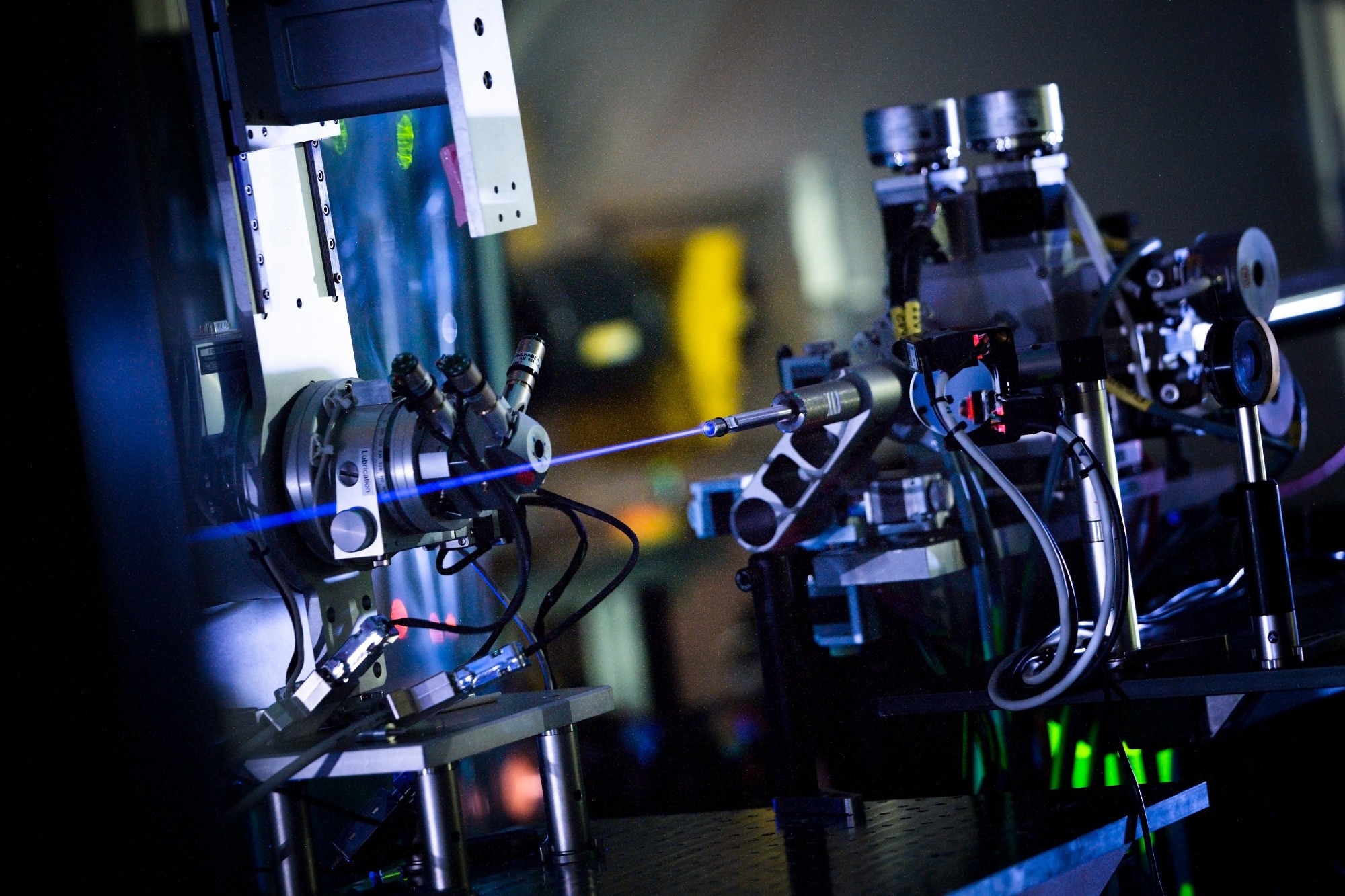The vacuum is imagined to be completely empty. However, it is filled with an energetic flickering: quantum fluctuations. Experts are currently planning a laser experiment to validate these vacuum fluctuations in a novel method, which could lead to the discovery of new physics laws.

The X-ray beam from the world's largest X-ray laser, the European XFEL, only becomes as clearly visible as in the photo in complete darkness and with an exposure time of 90 seconds. In 2024, the first experiments to detect quantum fluctuations in vacuum will take place here. Image Credit: European XFEL/Jan Hosan
A research team from the Helmholtz-Zentrum Dresden-Rossendorf (HZDR) has developed a series of proposals designed to help experiment more effectively–thus increasing the chances of success. The team presents its findings in the scientific journal Physical Review D.
The physics community has long known that the vacuum is not empty but rather filled with vacuum fluctuations - an unsettling quantum flickering in time and space. Although it cannot be directly detected, its influence can be observed indirectly, for example, by changes in the electromagnetic fields of microscopic particles.
However, it has not yet been possible to demonstrate vacuum fluctuations in the absence of particles. If this is accomplished, one of physics’ fundamental theories, quantum electrodynamics (QED), will be verified in a previously untested domain. However, if such an experiment reveals deviations from the theory, it would imply the existence of new, previously unknown particles.
This will be achieved via an experiment planned as part of the Helmholtz International Beamline for Extreme Fields (HIBEF), a research consortium headed by the HZDR at the world's largest X-Ray laser, the HED experimental station of the European XFEL in Hamburg. The basic idea is that a highly potent laser fires short, strong bursts of light into a stainless-steel cylinder that has been emptied.
The goal is to regulate the vacuum fluctuations in such a way that they rotate the oscillation direction of an X-Ray burst from the European XFEL and, magically, change its polarization.
It would be like sliding a transparent plastic ruler between two polarizing filters and bending it back and forth. The filters are originally set up so that no light passes through them. Bending the ruler would now change the direction of the light's oscillation in such a way that something could be seen as a result.
Ralf Schützhold, Professor and Director, Institute of Theoretical Physics, Helmholtz-Zentrum Dresden-Rossendorf
Two Flashes Instead of Just One
The first idea was to fire a single optical laser flash into the chamber and detect if it altered the polarization of the X-Ray light using specific measurement techniques. However, there is an issue.
Schützhold added, “The signal is likely to be extremely weak. It is possible that only one in a trillion X-ray photons will change its polarization.”
However, this could be below the existing measurement limit, meaning that the event might just slip through the cracks and go unnoticed. Schützhold and his colleagues are, therefore, depending on a variation: rather than firing a single optical laser pulse into the evacuated chamber, they plan to fire two of them at the same time.
There, the two flashes will hit head-on. The European XFEL’s X-Ray pulse is aimed directly at the point of contact. The decisive factor: The X-Ray pulse is affected, akin to a crystal, by the colliding laser bursts. The two colliding laser flashes’ momentarily existing “light crystal” should deflect the XFEL X-Ray pulse in the same way that X-Rays are diffracted, or deflected, when they travel through a real crystal.
“That would not only change the polarization of the X-Ray pulse but also slightly deflect it at the same time,” Schützhold further added.
Targeting Ultra-Light Ghost Particles?
If the two laser flashes sent into the chamber had two distinct wavelengths instead of the same color, the possibilities might even be further enhanced. This would also enable a small alteration in the X-Ray flash’s energy, aiding in the measurement of the impact.
Schützhold stated, “But this is technically quite challenging and may only be implemented at a later date.”
The first experiments are slated to begin in 2024, and the project is presently in the planning phases in Hamburg in collaboration with the European XFEL team at the HED experimental station. If they were successful, they could confirm QED again.
Perhaps, however, the experiments will highlight inconsistencies with the accepted hypothesis. This might be caused by previously undiscovered particles, such as axions, which are ultra-light ghost particles.
Schützhold concluded, “And that would be a clear indication of additional, previously unknown laws of nature.”
Journal Reference
Wang, E., et al. (2023) Detection schemes for quantum vacuum diffraction and birefringence. Physical Review D. doi:10.1103/PhysRevD.108.076005